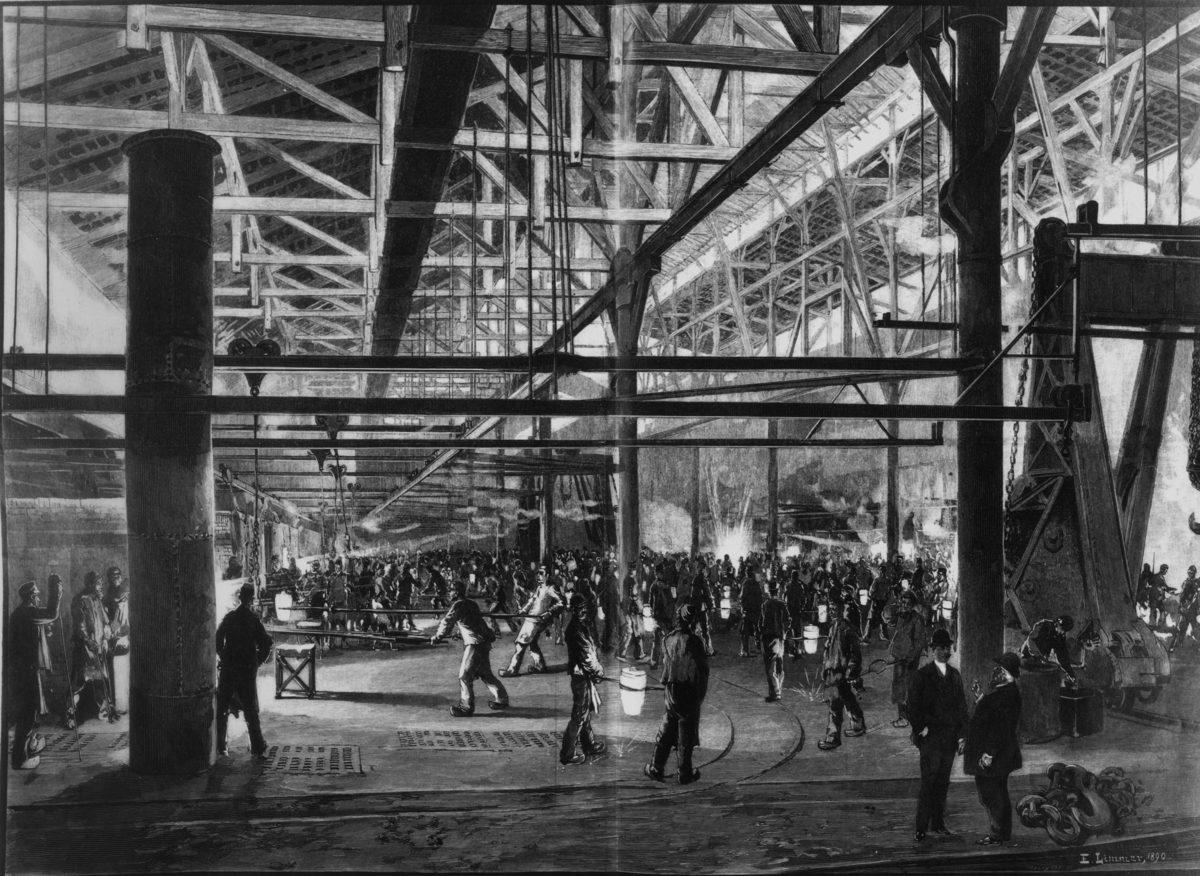Abstract
The smelting process and the production of steel ingots weighing as
much as 80 tons, as shown here, required a well-trained and disciplined
workforce. The Krupp enterprise was founded by Friedrich Krupp
(1787–1826), whose oldest son Alfred Krupp (1812–1887) took over sole
proprietorship in 1848. Krupp’s principal products were machinery and
machine components made of high-quality cast steel: equipment for
Germany’s expanding network of railroads (especially the seamless
wheels); artillery for the Prussian military; and later, armored plating
for the German navy. At the time of Alfred Krupp’s death in 1887, his
firm employed more than 20,000 workers. As a
speech included in this volume
suggests, Krupp sought to provide his employees with every incentive to
remain with his firm, including company pensions and subsidized housing.
At the same time, he also adopted a “master of the house” attitude that
brooked no opposition from his “dependents.” This 1890 woodcut is after
a drawing by Emil Limmer.
